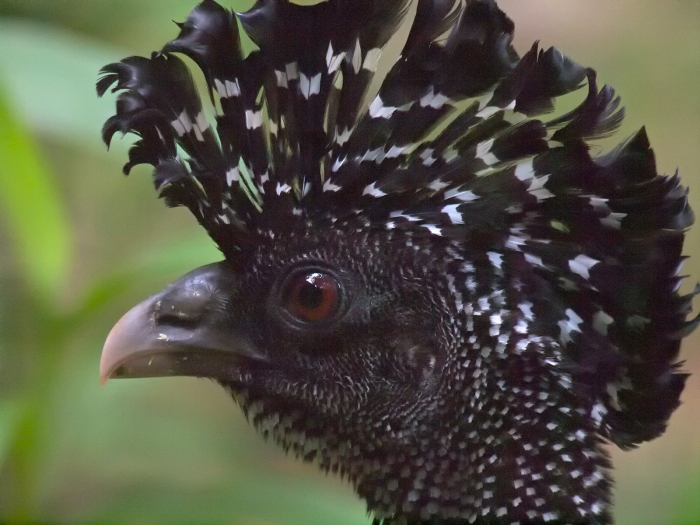Return of Bird of the Week: Great Curassow
As promised, we’ll leave the obscure Puffbird family behind and shift the focus to the much larger, but even more obscure family Cracidae. These are the Curassows, Guans and Chachalacas of Neotropical forests. Prized by Native Americans as game birds, they have developed a healthy wariness of humankind. Those that weren’t wary became dinner, after all.
There are 54 species of Cracidae; WC has photographed only a bare handful of them. To say they are secretive doesn’t begin to describe it. Birds in this family look somewhat like turkeys or pheasants, but those are distant relatives.
We’ll start with the Great Curassow, the largest of the Cracidae.

Great Curassow Female, rufous morph, Costa Rica
Great Curassows are sexually dimorphic. The males are black with a white belly, and a yellow knob on their bill. Females are polymorphic; this photo is of a rufous female, but you can also find barred and black morph females. (These photos were taken in very low light, in early evening under a dense jungle canopy. The quality or the photos, such as it is, is a testament to the high-ISO feature of the Canon 1DX.)

Great Curassow Female portrait, Costa Rica
These are quite large birds, males running to more than 35 inches long, females to about 32 inches. A large male can weigh almost five kilograms. And yet they can be nearly impossible to see, moving quietly through the forest or in the lower branches to the trees.

Great Curassow Male, Costa Rica
This species found from southern Mexico to northern Ecuador, but it is scarce across all of its range. It may now be extirpated within some states in Mexico. It is classified as Vulnerable area-wide. The species vanishes in areas where logging roads are built.
This species mostly eats fruit and berries, but does snack on invertebrates from time to time. There are reports of taking vertebrates, but that’s apparently rare.
If you are a birder, it’s a pretty amazing experience to see one of this species mooching down the trail towards you. That incredible crest and comparatively long toes are an amazing sight. The male’s soft, basso “oomp, oomph” call is another distinctive call of the Neotropical jungle.
For more bird photographs, please visit Frozen Feather Images.